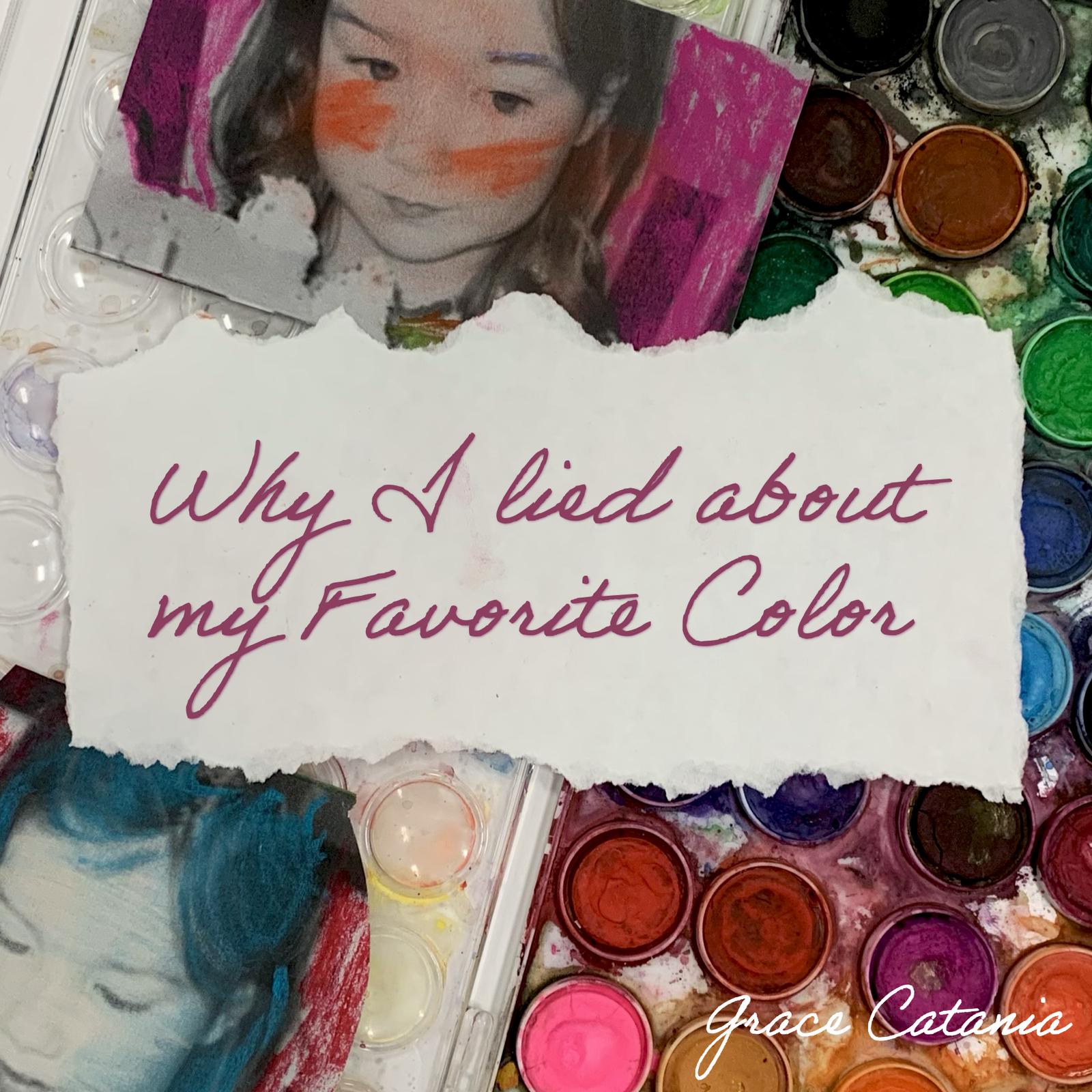Growing up, I believed identity was merely a collection of favorites: an animal, a movie, a sport, a book, a color. I weighed these favorites as if they said something massive and unchangeable about my character. If you asked me then which color was my favorite, I would have said red. Red appeared perfect: primary, self-assured, bold, difficult to ignore. I always admired the things I figured I could never be. Though I felt my favorite things were such a vital aspect of my identity, I was more concerned with how they would be perceived rather than how much I enjoyed and resonated with them.
If a person was as simple as color, Pink would have been a more accurate assignment. But I hated the way pink made me feel. It felt like a mockery-- a watered-down version of what I wanted to be. As much as I wanted to be, as a young girl, I was not red. Red was not quiet, sensitive, or naive. I felt imprisoned by my flushed face and fantasies of who I would rather be.
My mother, who I always saw as a prime example of red because she was intelligent and confident, and said things with resonance, enjoyed the color pink. She said that there was power in being thoughtful and sensitive. I hated that she called me sensitive. I blamed heredity: It wasn’t my fault that I had been born with a heart tattooed on my sleeve. But she was right, and since I did not know how to change my feelings, I changed the way I spoke about myself.
Years later as I approach adulthood, though I feel I have changed in nearly every other conceivable way, I still often find myself preoccupied with attempts to simplify self-definition. I give power to astrological placements, Myers-Briggs personality types, and the things people say about me. I prize the way they help me gauge who I am as a person, or who I appear to be. However, I am growing comfortable with the notion that the sense of self is complex and hard to grasp, no matter how many online quizzes I take or how many friends I ask to describe me.
I don’t remember the last time anyone asked me about my favorite color. It turns out to be not nearly as important as I once believed. But for my introspective purposes, I am sticking with red, and this time I mean it. I finally recognize the shades of red inside me. I know how to deal with passion and anger. I can bandage up blood and add fuel to a fire. Still, I try to hold on to this softness from my youth, that lets me forgive the knife and the match: a skill mastered by all the pink people, present and prior.
That is the beauty of identity-- it is everchanging. I can have two favorite colors, one for each side of me, and miraculously, no one will care at all. I am reworking my self-portrait, and I feel no shame as I color my cheeks in my most trustworthy hues. They are the only ones who know that I can be tough and mean, even if I cry at the movies and refuse to kill bugs. They understand why I embarrass myself often and with ease, why I make the same mistakes over and over, and why I sleep soundly in red pajamas, but in the comfort of light pink sheets.
I draw on, reminding myself a person is much more than an assemblage of things they like and dislike, or pretend to like and dislike. More than a list of nouns and adjectives. I look into myself: a twenty-year-old true friend of a friend, a red woman’s daughter, and the sister to a blue man’s son. I can appreciate things I once despised, and I know I may soon change my mind. I am a collection of transformations, things I have seen, jokes I shouldn’t have made, bruises from things that hurt me, bandaids from a hundred songs, and countless fragmented stories of people I loved and even some who loved me back. Most of all, I am learning to be okay with the fact that who I am is imperfect, uncertain, and to my greatest dismay, open to interpretation.

No Comments.